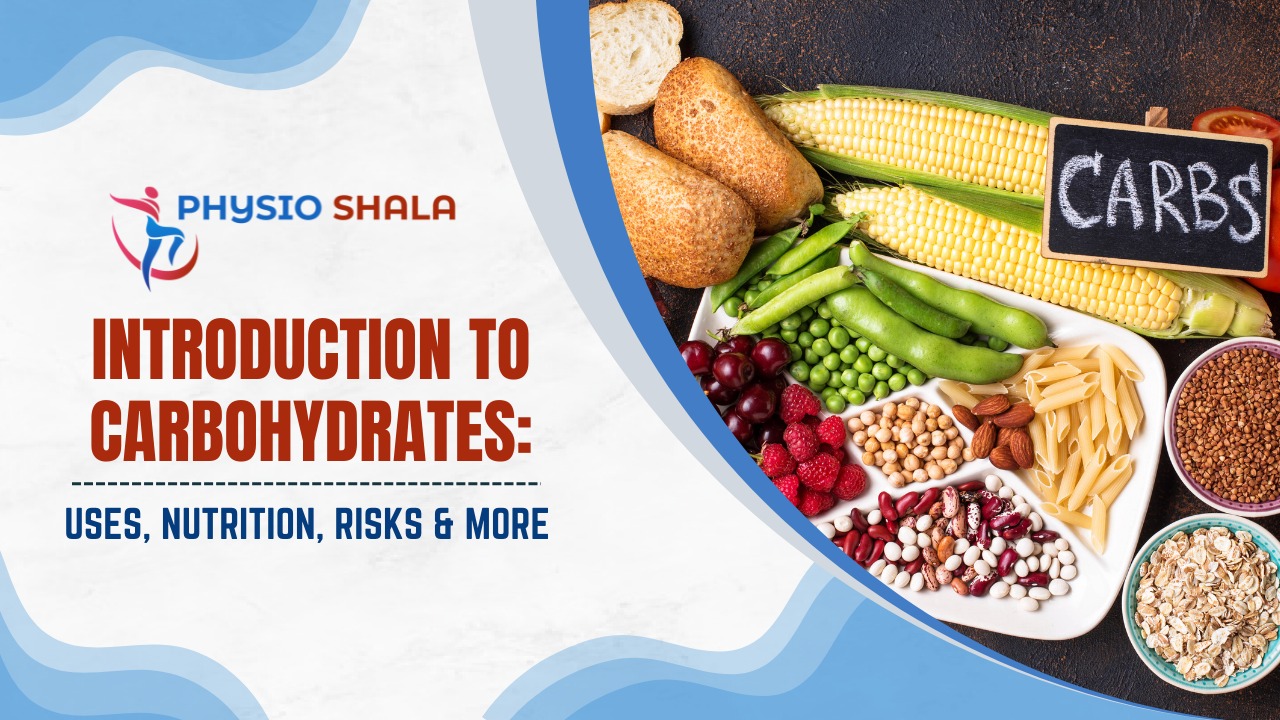Carbohydrates was the name first given to a class of compounds which on heating left a residue of carbon after the loss of water. They were thought to be hydrates of carbon with a general formula Cx(H2O)y. The earliest discoveries were sugar and starch, and since they both gave carbon residue along with other new compounds which were sweet the name ‘sugars’ was introduced. The name was further changed to ‘saccharides.’
Carbohydrates are defined as a class of compounds containing carbon (C), hydrogen (H), and oxygen (O). They were considered to be compounds of alcoholic type with hydroxyl (-OH) groups but further researches showed that they also carry aldehyde (-CHO) and keto (=C=O) groups.
A nomenclature was given by prefixing with aldehyde or keto group, followed by the number of carbon atoms, and ending in ‘-ose’. They were identified to be the derivative of glyceraldehyde.
Sources of Carbohydrates
Carbohydrates are present in the plant and animal kingdom. Plants synthesize it by photosynthesis while herbivores and carnivores get them through direct or indirect methods. It is present in fruits, flowers, and mainly in starch, cellulose, and sugar.
Human male semen is rich in fructose. Various carbohydrates in the form of polysaccharides such as glycogen, inulin, etc. occur in animals.
Functions of Carbohydrates
- The basic function of carbohydrates is to provide energy almost instantly for all the cells in the body particularly RBCs and brain cells. They are the most abundant dietary source of energy.
- Carbohydrates are a source of synthesizing fatty acids and amino acids in the body.
- Ribose is an important pentose that is the main constituent of DNA and RNA.
- Carbohydrates provide energy for the proper metabolism of fatty acids and are a supporting energy source in protein metabolism.
- Carbohydrates (as glycoproteins and glycolipids) participate in the structure of the cell membrane and important cellular functions like growth, adhesion, and fertilization.
- Carbohydrates are an important structural component of many organisms- fiber (cellulose) of plants, the exoskeleton of some insects, and the cell wall of microorganisms.
- Glycogen, a carbohydrate, is the stored form of energy that fulfills the immediate energy demands of the body.
Classification of Carbohydrates
Carbohydrates are classified into 3 major groups based on the number of sugar units—monosaccharides, oligosaccharides, and polysaccharides. Mono- and oligosaccharides are sweet to taste, crystalline in character, and soluble in water, hence they are commonly known as sugars.
Monosaccharides
Monosaccharides (mono means one) are the simplest group of carbohydrates often referred to as simple sugars. The general formula of monosaccharides is Cn(H2O)n and they cannot be hydrolyzed further. Monosaccharides are further divided into different categories based on the functional group (Aldoses or Ketoses) and the number of carbon atoms (trioses, tetroses, pentoses, hexoses, and heptoses).
Aldoses: When an aldehyde is a functional group in a monosaccharide it comes under the category of aldoses. Example- glyceraldehyde, glucose.
Ketoses: When the functional group in a monosaccharide is a keto group, it comes under the category of ketoses. Example- fructose, dihydroxyacetone
Based on the number of carbon atoms present monosaccharides are classified as:
- trioses- 3C
- tetroses- 4C
- pentoses- 5C
- hexoses- 6C
- heptoses- 7C
These terms along with functional groups are used in naming the monosaccharides. Example- Glucose is an aldohexose, while fructose is a ketohexose (same number of carbon atoms but different functional groups).
| Examples of monosaccharides | ||
| Monosaccharides | Aldose | Ketose |
| Trioses (C3H6O3) | Glyceraldehyde | Dihydroxyacetone |
| Tetroses (C4H8O4) | Erythrose | Erythrulose |
| Pentoses (C5H10O5) | Ribose | Ribulose |
| Hexoses (C6H12O6) | Glucose | Fructose |
| Heptoses (C7H14O7) | Glucoheptose | Sedoheptulose |
Oligosaccharides
Oligosaccharides (oligo means few) have 2-10 monosaccharide molecules which are liberated on hydrolysis. On the basis of the number of monosaccharide units present, oligosaccharides are further classified into disaccharides, trisaccharides, etc. Units of monosaccharides are connected by a glycosidic bond.
Polysaccharides
Polysaccharides (poly means many) are polymers of monosaccharide units. They have a high molecular weight. Polysaccharides are usually tasteless and form colloids with water. Units of monosaccharides are connected by a glycosidic bond. Example- cellulose, inulin, glycogen, starch, etc.
These are further divided into- homopolysaccharides and heteropolysaccharides.
Characteristics of Carbohydrates
- All carbohydrates are solids
- They are soluble in water except for polysaccharides
- Upon heating carbohydrates char to give carbon
- Except polysaccharides, all carbohydrates are optically active and turn polarized light either towards right or left called Dextro-rotatory or Laevo-rotatory respectively
- Glucose contains 6 carbon atoms out of which four are symmetric and the number of isomers of glucose will be 24= 16 including glucose. Out of the 16 isomers, eight will be of D-configuration and the other eight will be of L-configuration. These isomers will be mirror images and non-superimposable.
- Reaction with phenylhydrazine: Monosaccharides react with phenylhydrazine in excess and give a characteristic precipitate called Osazone. These osazones crystallize and have a specific melting point.
References –

